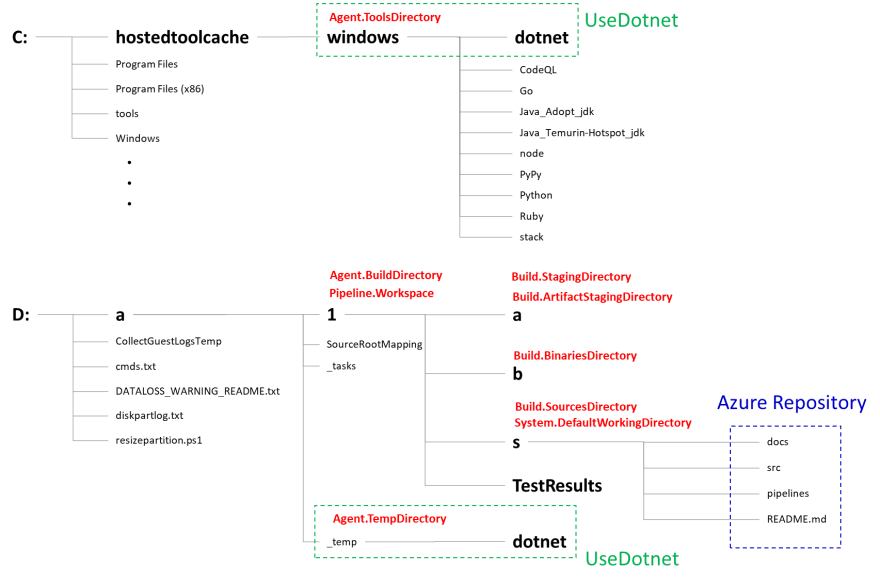Summary
In this article, I would like to share my learnings about the directory structure of Azure pipeline Microsoft-hosted agents. This code sample includes the ready-to-use Azure pipelines with windows-2019 and windows-2022.
TOC
Predefined variables
Azure Pipelines have predefined variables which you can use on your pipelines. There are different directory variables, some of which overlap, some of them are under a different partition. I am trying to describe those predefined variables below.
windows-2019 (Microsoft-hosted agent)
-
Agent.ToolsDirectoryorAgent.TempDirectoryare used for different versions of tools.Agent.ToolsDirectoryis underC:and then tools are cached and not cleaned up across the pipeline runs.Agent.TempDirectoryis underD:and then cleaned up after a pipeline run. The code example below lets the pipeline use the cached versions of .NET 6 tools.
- task: UseDotNet@2
displayName: Use .NET 6 sdk
inputs:
packageType: sdk
version: 6.0.x
installationPath: $(Agent.ToolsDirectory)/dotnet
-
Agent.BuildDirectoryandPipeline.Workspaceare atD:\a\1which is a workspace directory for a particular pipeline. -
Build.StagingDirectoryandBuild.ArtifactStagingDirectoryare atD:\a\1\a, which is used for where build artifacts are copied before being pushed. -
Build.BinariesDirectoryis atD:\a\1\b, which is used for compiled binaries. -
Build.SourcesDirectoryandSystem.DefaultWorkingDirectoryare atD:\a\1\a, which are used for your source code files.
.NET Restore, Build, Publish
dotnet restore
dotnet restore creates obj folder and includes some of files regarding Nuget packages.
dotnet build
dotnet build outputs dll files and exe files under bin and obj.
dotnet publish
dotnet publish outputs dll files and exe files under a pointed folder. For example, the code example outputs files under publish folder and then those files are zipped. In this case, the project name is TravelApi and the zip file name is TravelApi.zip, which is used for Azure App Service deployment. The difference from dotnet build is TravelApi.zip includes web.config in addition to the build files.










Top comments (0)